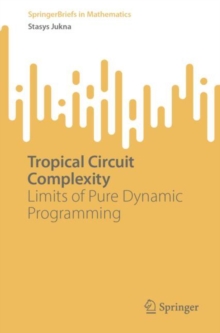
Pancyclic and Bipancyclic Graphs PDF
by John C. George, Abdollah Khodkar, W.D. Wallis
Part of the SpringerBriefs in Mathematics series
Description
This book is focused on pancyclic and bipancyclic graphs and is geared toward researchers and graduate students in graph theory. Readers should be familiar with the basic concepts of graph theory, the definitions of a graph and of a cycle. Pancyclic graphs contain cycles of all possible lengths from three up to the number of vertices in the graph. Bipartite graphs contain only cycles of even lengths, a bipancyclic graph is defined to be a bipartite graph with cycles of every even size from 4 vertices up to the number of vertices in the graph. Cutting edge research and fundamental results on pancyclic and bipartite graphs from a wide range of journal articles and conference proceedings are composed in this book to create a standalone presentation.
The following questions are highlighted through the book:
- What is the smallest possible number of edges in a pancyclic graph with v vertices?
- When do pancyclic graphs exist with exactly one cycle of every possible length?
- What is the smallest possible number of edges in a bipartite graph with v vertices?
- When do bipartite graphs exist with exactly one cycle of every possible length?
Information
-
Download - Immediately Available
- Format:PDF
- Publisher:Springer International Publishing
- Publication Date:18/05/2016
- Category:
- ISBN:9783319319513
Other Formats
- Paperback / softback from £40.99
Information
-
Download - Immediately Available
- Format:PDF
- Publisher:Springer International Publishing
- Publication Date:18/05/2016
- Category:
- ISBN:9783319319513










